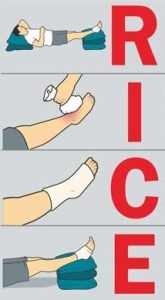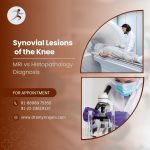If you've ever experienced a knee injury, you know how debilitating it can be. The anterior cruciate ligament (ACL) is one of the most crucial ligaments in the knee joint, responsible for stability and preventing excessive forward movement of the tibia. When the ACL is torn or ruptured, it can severely impact your ability to perform daily activities, sports, and even impact your overall quality of life. In such cases, ACL reconstruction surgery becomes a viable option to restore stability and functionality to your knee.
Understanding ACL Tear
An ACL tear often occurs during sports activities that involve sudden stops, changes in direction, or direct trauma to the knee. It's a common injury among athletes participating in sports such as basketball, soccer, and skiing. When the ACL is torn, it is challenging for the body to repair itself due to the limited blood supply to the ligament.
Symptoms of an ACL Tear
Recognizing the signs and symptoms of an ACL tear is essential for seeking appropriate medical attention. Some common symptoms include:
- Pain and Swelling: After the injury, you may experience significant pain and swelling around the knee joint.
- Instability: A torn ACL often leads to a feeling of instability or "giving way" in the knee, making it difficult to bear weight or engage in physical activities.
- Audible "Pop": Many individuals report hearing a distinct "pop" sound at the time of injury, indicating a potential ACL tear.
- Limited Range of Motion: The knee may have a reduced range of motion, making it challenging to fully extend or flex the joint.
If you're experiencing these symptoms, it's crucial to consult with an orthopedic specialist who can assess your condition and recommend the most appropriate treatment plan.
The Role of ACL Reconstruction Surgery
ACL reconstruction surgery aims to restore stability to the knee joint and enable individuals to return to their pre-injury level of activity. The procedure involves replacing the torn ACL with a graft, typically sourced from your own body (autograft) or a donor (allograft). There are various graft options, including patellar tendon, hamstring tendon, and quadriceps tendon, each with its advantages and considerations.
The surgical procedure typically follows these steps:
Step 1: Preoperative Assessment
Before the surgery, your orthopedic surgeon will conduct a thorough evaluation to assess the extent of the injury and determine the best course of action. This assessment may involve physical examinations, imaging tests, such as MRI scans, and discussions about your medical history and activity level.
Step 2: Anesthesia and Incisions
ACL reconstruction surgery is performed under general anesthesia to ensure you are comfortable and pain-free during the procedure. Once you're anesthetized, the surgeon will make small incisions around the knee to access the damaged ligament.
Step 3: Graft Harvesting
The surgeon will carefully harvest the graft material, taking into consideration the type of graft chosen and its suitability for your specific case. The autograft is usually harvested from the patellar tendon, hamstring tendon, or quadriceps tendon.
Step 4: Tunnel Creation
Next, the surgeon will create tunnels in the tibia and femur bones to accurately position the graft. These tunnels act as guides for securing the graft in its correct anatomical position.
Step 5: Graft Placement and Fixation
The graft is then placed through the tunnels, effectively replacing the torn ACL. Special screws, staples, or other fixation devices are used to secure the graft in place until it fully integrates with the surrounding tissues.
Step 6: Closure and Recovery
Once the graft is secure, the surgeon will close the incisions with sutures or staples. You'll then be moved to the recovery area, where you'll receive appropriate pain management and guidance on postoperative care and rehabilitation.
Postoperative Care and Rehabilitation
The success of ACL reconstruction surgery relies heavily on postoperative care and a comprehensive rehabilitation program. Here are some essential aspects of the recovery process:
 1. R.I.C.E. Protocol
1. R.I.C.E. Protocol
Immediately after surgery, the R.I.C.E. protocol is commonly employed:
- Rest: Allow your knee to rest and avoid putting weight on it.
- Ice: Apply ice packs to the surgical site to reduce swelling and pain.
- Compression: Use compression bandages or sleeves to control swelling.
- Elevation: Keep your leg elevated above the level of your heart to minimize swelling.
2. Physical Therapy and Rehabilitation

Physical therapy plays a vital role in the recovery process. A skilled physical therapist will guide you through exercises and techniques to gradually restore strength, flexibility, and stability to your knee. Knee rehabilitation may include exercises to improve range of motion, strengthening exercises, balance training, and functional activities tailored to your specific needs.
Conclusion
ACL reconstruction surgery is an effective treatment option for individuals with ACL tears who desire to regain stability, function, and return to their previous level of activity. The procedure involves replacing the damaged ligament with a graft, allowing the knee joint to regain its strength and stability. With proper postoperative care and a structured rehabilitation program, most individuals can successfully recover from ACL reconstruction surgery and resume their active lifestyles.
FAQs
Q1: How long does it take to recover from ACL reconstruction surgery?
The recovery period can vary depending on several factors, including the individual's overall health, adherence to postoperative care and rehabilitation, and the type of graft used. In general, it takes approximately 6 to 9 months to make a full recovery and return to sports or strenuous activities.
Q2: Can ACL tears heal without surgery?
While small partial tears or ACL sprains may heal with conservative treatment, complete ACL tears typically do not heal on their own due to the limited blood supply to the ligament. ACL reconstruction surgery is often recommended to restore stability and functionality to the knee.
Q3: Will I be able to return to sports after ACL reconstruction surgery?
Yes, many individuals are able to return to sports and other physical activities after a successful ACL reconstruction surgery and rehabilitation. The recovery process and the timeline for returning to sports will depend on individual factors, such as the extent of the injury, the rehabilitation program, and the guidance of your healthcare team.
Q4: Are there any risks or complications associated with ACL reconstruction surgery?
As with any surgical procedure, ACL reconstruction surgery carries certain risks and potential complications. These may include infection, blood clots, graft failure, stiffness, and persistent knee pain. However, these complications are relatively rare, and your surgeon will take necessary precautions to minimize any potential risks.
Q5: Can ACL tears be prevented?
While it may not be possible to completely prevent ACL tears, there are certain measures you can take to reduce the risk. These include maintaining proper strength and flexibility through regular exercise, using proper techniques and protective gear during sports activities, and participating in injury prevention programs that focus on strengthening the muscles around the knee.
Ready to conquer your ACL tear?
Take the first step towards restoring knee stability and reclaiming an active lifestyle. Schedule a consultation with Dr. Amyn Rajani, a renowned knee surgeon in Mumbai, specializing in ACL reconstruction surgery. Benefit from his expertise, advanced techniques, and personalized care to ensure a successful recovery. Contact us today to book an appointment on 91-88989 75355 / 91-22-23619137 and regain confidence in your knee's strength and functionality.



